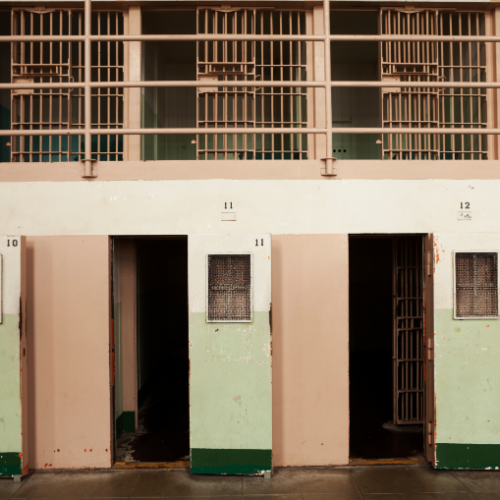Business executives and policymakers found common ground during a meeting at the White House on Monday designed to review ways in which government can help—or hinder—efforts to improve employment outcomes for people with criminal records.
Moderated by U.S. Secretary of Labor Thomas E. Perez, “Pathways to Prosperity: How Public and Private Sectors Can Put People with Criminal Records to Work” highlighted corporate willingness to hire those with prior convictions, the public sector’s desire to eliminate obstacles to employment and an overall eagerness to continue the discussion in states across the country.
“This is an issue of passion for me because I truly believe … that people deserve a second chance,” said Perez, who has worked on these issues at all levels of government. “I think that one of many reasons this is a bipartisan issue is because that’s a belief that people across any ideological spectrum share.”
More than 1,650 corrections, reentry, and labor professionals across 41 states participated virtually in the event, organized by the White House Domestic Policy Council, the Council of State Governments Justice Center (CSG Justice Center), and the National Reentry Resource Center.
“We have a fiscal and moral responsibility to be more strategic in how we structure the environment that [individuals with criminal records] are returning to,” said John Wetzel, secretary of the Pennsylvania Department of Corrections and CSG Justice Center Board member. “Work is such an important piece to that.”
The first roundtable included state-level policymakers, leaders from the corrections and workforce development field, and business executives from companies such as Home Depot, Johns Hopkins Hospital and Health System, and Tim Hortons, Inc.
Pamela Paulk, Senior Vice President of Human Resources at Johns Hopkins Health System and Johns Hopkins Medicine, said her company has been successful at hiring employees with criminal records because of its “thoughtful and very intense hiring process,” which includes individualized assessments to match people to the right job.
Others pointed to the importance of hiring and promoting based on performance and merit.“I have been doing this 14 years, and 5 percent of our staff—that’s one out of every 20 [people]—have a prior offense,” Ms. Paulk said, also emphasizing that there had never been a problem with any of these employees.
“When you get into the company … it’s your merit that will take you into different positions,” said Derek Bottoms, Vice President of Associate Relations at the Home Depot.
The 16-member panel also discussed barriers to connecting individuals with criminal records to employment, including the need for adequate job training.
“We have to provide resources at the state level for [this] to work, “said New York Assemblyman Jeffrion Aubry, who also serves on the board of the CSG Justice Center. “We have to encourage businesses to work with these individuals, and we need partners at all levels of government.”
The event’s second roundtable featured leaders from leading nonprofit organizations and representatives of the U.S. Departments of Justice and Labor, who shared information on current initiatives, efforts, and resources that support the field in this area.
Sam Schaeffer, Chief Executive Officer and Executive Director of the Center for Employment Opportunities, talked about his organization’s work with New York State in a Pay For Success project. This initiative brings together state agencies working in corrections and community supervision, workforce development and labor, along with community-based organizations and service providers to ensure individuals returning from incarceration are matched into employment services based on their risk of reoffending and level of job readiness.
Portia Wu, Assistant Secretary of the Employment and Training Administration at the U.S. Department of Labor, and Denise O’Donnell, Director of the U.S. Department of Justice’s Bureau of Justice Assistance, discussed additional ongoing efforts at the federal level. Ms. Wu highlighted the Reintegration of Ex-Offenders (RExO) grant program, which provides funding to support employment programs and services for individuals with criminal records.
“The evidence shows these programs help reduce recidivism and help people get [individuals] into good jobs,” she said, noting the department recently renewed funding for the grant program. “We are excited to keep investing in these programs.”
Director O’Donnell focused on the achievements of the Second Chance Act, which has provided funding for reentry programs and services to more than 600 organizations and agencies since 2009. She also announced a solicitation for pilot sites to test innovative employment and workforce development strategies in a project under the direction of the U.S Departments of Justice and Labor, the Annie. E. Casey Foundation, and the CSG Justice Center. The strategies that will be tested come from the CSG Justice Center white paper, Integrated Reentry and Employment Strategies: Reducing Recidivism and Promoting Job Readiness, released last year.
“We have so much more science now on what works in reentry and what also works in employment,” said Director O’Donnell. “We are now putting this into practice … We are looking for good partners who are really committed to make [the strategies in] this white paper a reality.”
Following the event, Tennessee Senate Majority Leader and CSG Chairman Mark Norris called on all states to convene their respective business leaders to hold similar conversations, using Monday’s White House discussion as a guide.
“Today is a terrific demonstration of the kind of private-sector dialogue we need to design strategies that are good for business and that put people who are now law-abiding citizens to work,” said Norris, who attended the event. “We’re calling on all states to have the same kind of conversations at the state level.”
The National Reentry Resource Center, a project of the CSG Justice Center, also provided a one-page, call-to-action document, which was created to help local policymakers jump-start these conversations in their jurisdictions.
To learn more about the Integrated and Reentry Employment Project, click here.
A positive school experience, where a child feels secure, is essential for their well-being. However, for many children…
Read More The Path to Statewide Community Crisis Response in New Jersey: A Community Advocate’s Perspective
Read More
The Path to Statewide Community Crisis Response in New Jersey: A Community Advocate’s Perspective
Read More
 Supporting Children of Incarcerated Parents: Reimagining School and Community Collaboration
Supporting Children of Incarcerated Parents: Reimagining School and Community Collaboration
A positive school experience, where a child feels secure, is essential for…
Read More Bridging Communities and Correctional Systems: Q&A with CSG Justice Center Advisory Board Member Commissioner Nicholas Deml
Read More
Bridging Communities and Correctional Systems: Q&A with CSG Justice Center Advisory Board Member Commissioner Nicholas Deml
Read More
 Assigned to the Cloud Crew: The National Incarceration Association’s Hybrid Case Management for People with Behavioral Health Needs
Assigned to the Cloud Crew: The National Incarceration Association’s Hybrid Case Management for People with Behavioral Health Needs
When returning to their communities from criminal justice settings, people with behavioral…
Read More Meet the Medicaid and Corrections Policy Academy Mentor States
Meet the Medicaid and Corrections Policy Academy Mentor States
New Hampshire Department of Corrections Commissioner Helen Hanks presents at the Medicaid…
Read More










